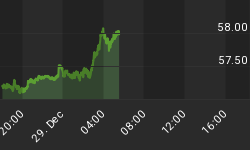Follow-up No. 12 / March 17, 2008
| US Dollar Index: RETURN ON ONE CONTRACT ($1,000 x Index) | |||||
| Sell Date | Contract No. | Sell Price | Total (USD) | Price Today | Value Today |
| January 27, 2003 | 1 | 99.33 | 99'330.00 | ||
| Total | 1 | 99.33 | 99'330.00 | 71.67 | 71'670.00 |
| Profit | 27'660.00 | ||||
| Profit (in %) | 28% | ||||
| OUR LONG-TERM RECOMMENDATION | REMAIN SHORT | ||||
| OUR SHORT-TERM RECOMMENDATION | REMAIN SHORT, BUT PLACE STOPS! | ||||
The U.S. Dollar Index® is computed using a trade-weighted geometric average of six currencies.
The six currencies and their trade weights are:

The twenty-year picture
While the past is not always a reliable guide as to what the future may bring, it can give us a prescience of what may lie ahead. The chart below reveals one thing for sure: the US-Dollar has lost more than 50% against a basket of foreign currencies over twenty years, but not in an uninterrupted line of course.
We also note that after the sharp fall that touched bottom first at the end of 1988, sharp rallies followed ensued by further sell-offs which made new lows..
We wrote in November of 2005: "This could be an indication as to what lies in store for us!" and we concluded that the present rally (2005) may be followed by a sharp reversal in the coming weeks or months." And indeed, in December 2005, the US-Dollar started to resume its down-trend.
So let us examine in more detail what could be the future direction of the US-Dollar against the basket of currencies displayed above.

The long-term picture
The US-Dollar moved through a significant down-trend line in March 2005, setting in motion further buying activity which was supported by a trend towards higher interest rates in the USA.
During the summer months, we registered a first peak at 90.77 followed by a second, higher one, at 92.63. At this stage, the US-Dollar sold off again, recovered again, but did not manage to go above 92.63.
"A classical head-and-shoulder pattern emerged which is now complete and promises further down-side pressure for the US-Dollar", we wrote in our Follow-up No. 8 dated May 26, 2006.
While many remained bullish for the US-Dollar, our prediction came true. Further US-Dollar weakness followed. In a down-trend, counter movements are however a normal occurrence and as the chart below clearly reveals, when the Index falls to 10% below the weekly EMA(50), counter-movements back to the EMA have been common. At present the Index has fallen to -8.4% signalling that we are approaching a critical level.
Technical aspects present only one side of the medal. Fundamentals speak for further dollar-weakness and not much has changed since March 2007 except that it becomes evident that the Central Banks start losing control.
We repeat what we wrote in March 2007: "Fundamental considerations do not favour a strong US-Dollar. The problems remain and interest rates in the USA are unlikely to move much higher in the near future. On the contrary, after a historic five-year boom propelled by a strong economy and low interest rate, the real estate market went bust in 2007, according to the final tally released Thursday by the National Association of Realtors. Sales of existing single-family homes fell 8.4 percent to about 6.5 million, the biggest annual decline since a 14.8 percent drop in 1989. As the US-economy shows signs of weakening, driven by a crumbling housing market, interest rates may even start to fall."
U.S. NATIONAL DEBT CLOCK
The Outstanding Public Debt as of 16 Mar 2008 at 07:01:34 AM GMT is:
![]()
The estimated population of the United States is 303,631,113. So each citizen's share of this debt is $30,998.46 or $1,662 more than just six month ago.
The National Debt has continued to increase at an average of $1.70 billion per day since September 29, 2006!
You should not forget to add the private debt.
The medium-term picture

"This reversal pattern shown above suggests that it is highly unlikely that the US Dollar Index will move back to a level above 90 points. As a matter of fact, the drop through the neckline of the formation down to the level of less than 84 and the subsequent pull-back towards 86 points, at which new selling pressure emerged, would favour a further decline to much lower levels." What we wrote in May 2006 has now been confirmed. In fact, the double top at 87.30 set the stage for the decline down to the 82 point level.
We added in March 2007. "The rebound that followed and puffed out just below the 86 point level confirms that the US Dollar has little strength left and should most likely resume its downward path. This down movement could accelerate once further weakness in the US economy becomes manifest and interest rates come down."
While the technical picture reveals a so-called "over-sold" situation, it is hard to tell how much is too much. A short term technical trader, especially when trading on margin, should at least use some stops or buy back the dollars sold short right away.
The short-term picture

Our recommendations were valid at the time of writing, viz. at

and may no longer be relevant at the time of reading.
















